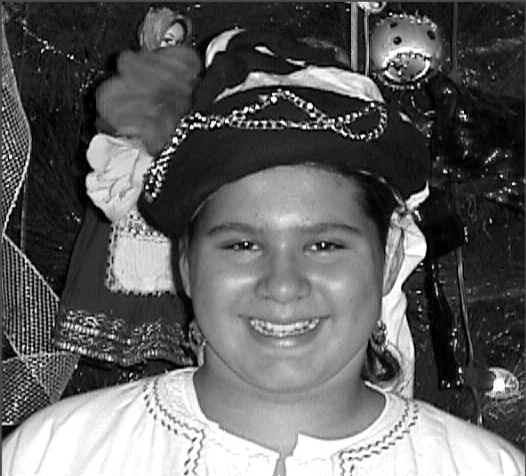 The Orpheus Dance Troupe has been
performing for the past several years at the annual "Christmas Around the World"
Festival at the Museum of Science & Industry, but this year's performance was a
special one. For the first time, the Orpheus Youth Group performed at the festive event,
which is held each holiday season at the museum.
The Orpheus Dance Troupe has been
performing for the past several years at the annual "Christmas Around the World"
Festival at the Museum of Science & Industry, but this year's performance was a
special one. For the first time, the Orpheus Youth Group performed at the festive event,
which is held each holiday season at the museum.Nearly 30 members of the Youth, all dressed in traditional costumes, performed a program of mainland Greek folk dances which included a dance suite from Epirus and other selections from central Greece and Macedonia. The group was received enthusiastically by the audience, which included Metropolitan Iakovos, head of the Greek Orthodox Diocese of Chicago, and many proud family members and friends. Dancers from the adult group cheered the Youth on from the sidelines, and later performed a lively suite of island dances to complete the Orpheus program.
OHFS supporter and friend, Mrs. Dina Sianis, along with other parents of the group's members, spent many hours making replicas of authentic costumes from Thrace and Epirus. The end result was a very professional and impressive presentation by the Youth. The future of the Orpheus Dance Troupe is indeed bright! Many thanks also go to the dedicated team of instructors who were responsible for the preparation and presentation of the Youth Group.
Future presentations of the Orpheus Youth Group will take place on Friday, February 25 at St. Peter & Paul Greek Orthodox Church and then later in May at the 10th Skokie Festival of Cultures.
Registration for both Youth Group branches in Chicago and Glenview is always open and we encourage new members to register. Please contact any of the individuals listed in this newsletter for more information.
 "Channel 11 -
May I take your pledge?" The public television airwaves were taken over by Greek
filoxenia and traditional music as the Orpheus Dance Troupe and other members of the
Chicagoland Greek community participated in the Channel 11 airing of "The
Greek-Americans II" last December 6.
"Channel 11 -
May I take your pledge?" The public television airwaves were taken over by Greek
filoxenia and traditional music as the Orpheus Dance Troupe and other members of the
Chicagoland Greek community participated in the Channel 11 airing of "The
Greek-Americans II" last December 6.Orpheus members (dressed in traditional folk costumes and official OHFS T-shirts) spent a fun evening at the WTTW Channel 11studios working as pledge drive volunteers to raise funds for the public television station during the sequel episode of the popular Greek-American series. The second show in the series further highlighted the important contributions made by Greek immigrants and their families to American culture, the political arena, popular entertainment and successful business ventures all around the nation, and featured commentary from an impressive array of prominent Greek-Americans.
In preparation for the hard work ahead, the evening began with dinner, which was kindly provided for the hungry volunteers by WTTW and even included some Greek favorites, which were donated by local businesses. After station employees briefly explained the volunteers’ duties for the night, the group of about 60 volunteers settled into their seats and eagerly waited for the countdown to airtime!
At the signal for each pledge break, the OHFS members and their comrades turned on their phones and went to work, diligently (tirelessly)taking pledges from callers who pledged money in hopes of reaching the designated goal of $50,000 set for the night. Well, we can proudly say the Greek community came through with flying colors, as the enthusiastic group of volunteers succeeded in surpassing their goal!!
During the course of the evening, the volunteers were taken on a tour of the impressive WTTW studios, and even took some calls from friends and relatives, who were treated to a shameless show of mugging for the camera! Our thanks to Voula Drougas, Orpheus member and Channel 11employee, for all her help in arranging the OHFS participation in the membership drive. A good time was had by all!

The Orpheus web site has truly
evolved since its inception in September,1997! The web site was originally created to
mirror the Orpheus newsletter, a medium which informed members and friends of performance
schedules and general news about the dance troupe. Due to improved computer technology and
frequent updates, the web site has evolved into a fun and educational tool serving the
Greek folk dance community in Chicago as well as around the world!
Most notable is the addition of a
detailed section for the Orpheus Youth Group which includes
videos, pictures, practice schedule calendars for the Chicago and Glenview branches,
performance information and "spotlight" features of our young dancers.
The Dance
Repertoire section has been expanded, and now features a new
"clickable" map of Greece. Want to view a list of dances and accompanying map
from the Aegean Islands? Click on that section, and voila! A detailed list of dances will
appear for the selected region.
Did you attend the Orpheus 10-year
anniversary benefit? If you’d like to see the fruits of your generous donations,
simply go to the orpheus Costume Collection
section. On display are pictures and descriptions of the newest additions to the
collection: a series of female island costumes from Thassos, female Metaxades costumes
from Thrace and male Epirotan costumes for the Youth. Brand new to the Orpheus web site
are "Site Map" and "Search" buttons. A"site map" is an
organizational chart which shows the structure of the web site. Why manually search
through the web site to find out about the Orpheus trip to Athens?
Just click on the "Search" button,
type in "Athens" and the article will pop up on your computer screen! In a
nutshell, if you'd like to find out what is new with Orpheus, click on the Web Updates button and you'll find up-to-date information. The
web site is continuously updated and improved, so check back with us often!
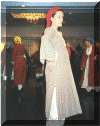

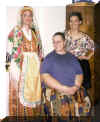
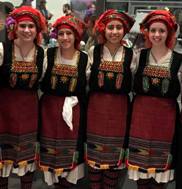
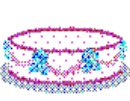 It looks
like 2000 will be a great year for Orpheus member Sherry Dagrizikos! Sherry found
the coin in her piece of one of Mrs. Dina Sianis' famous Vasilopites at the 3rd Annual
Orpheus Vasilopita on January 15th. This year the event took place in the church hall of
St.Haralambos Greek Orthodox Church in Niles, IL. The big group of almost 200 guests
included OHFS members, and also many friends and family members.
It looks
like 2000 will be a great year for Orpheus member Sherry Dagrizikos! Sherry found
the coin in her piece of one of Mrs. Dina Sianis' famous Vasilopites at the 3rd Annual
Orpheus Vasilopita on January 15th. This year the event took place in the church hall of
St.Haralambos Greek Orthodox Church in Niles, IL. The big group of almost 200 guests
included OHFS members, and also many friends and family members. 
